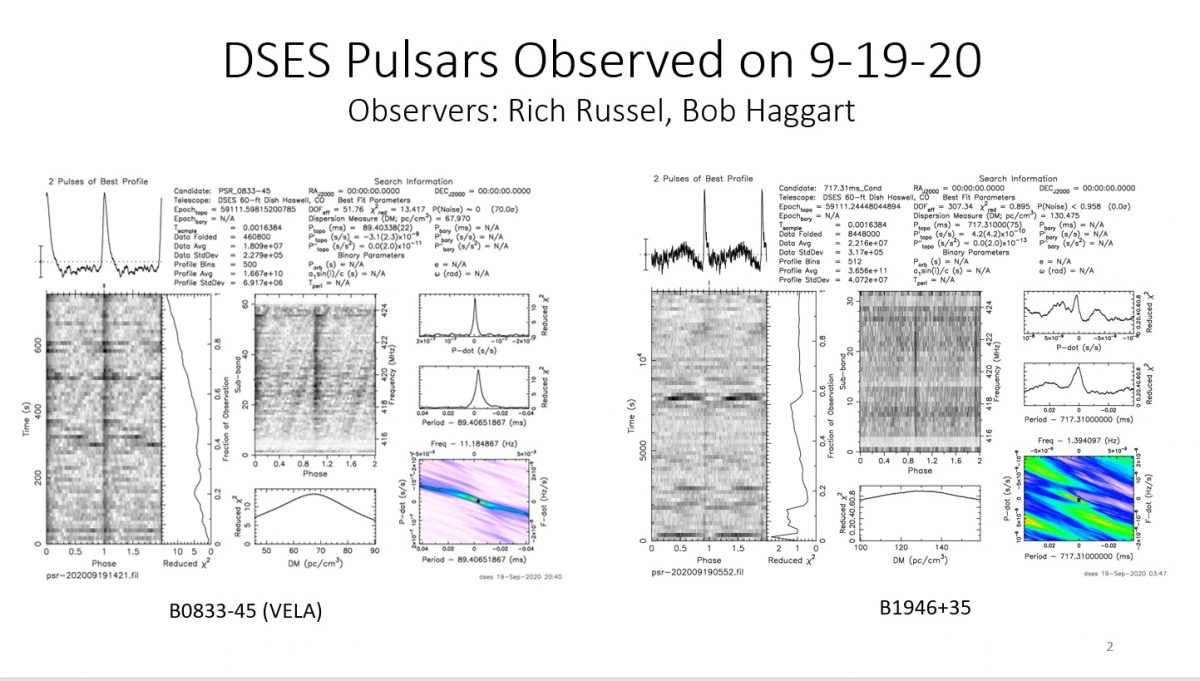Bob Haggart and Rich Russel did an observation all nighter on Friday/Saturday (September 19, 2020, GMT) and observed 2 pulsars.
VELA (B0833-45) is one of the strongest pulsars at 5 JY while B1946+35 is at 0.145 JY.
DSES is one of the most northern amateur stations to detect VELA. We detected it in 15 minutes at 5 to 6 degrees elevation.
This make 13 pulsars and puts us 5th on the international amateur pulsar hunter list. http://www.neutronstar.joataman.net/
Month: September 2020
DSES Pulsar Observing Team netted 5 new pulsars!
The DSES team of Rich Russel, Ray Uberecken, and Glenn Davis observed for pulsars on Saturday September 5, 2020 at the DSES 60-foot dish antenna at Haswell, CO.
The team successfully observed 5 pulsars which we hadn’t been able to detect before.
The success is attributed to the calibration of the antenna pointing system and the new automatic tracking system developed by the System 1 team.
We started with calibrating the azimuth of the antenna (it was 2.5 degrees off!) Elevation was good. Glenn put the offset in the auto tracking system and we were able to detect the B0329+54 pulsar within 30 minutes. (We use the B0329+54 pulsar, the first one we successfully saw last May, as a starting reference. If we can observe this, we know our system is working.) Every pulsar we looked at after that was detected – we just ran out of time for more!
It is possible we missed observing previous pulsars because our pointing accuracy was off.
See the slide set for our observation summary.
http://dses.science/wp-content/uploads/2020/09/8-Pulsars-Observed-so-Far-9-5-20-r3.pdf
We are pretty sure we observed the Crab pulsar. The last slide shows an analysis of the time between pulses we measured for the Crab pulsar, compared to the standard reference database.
More detail to come at the next science meeting
Our total pulsar count is now 8!
